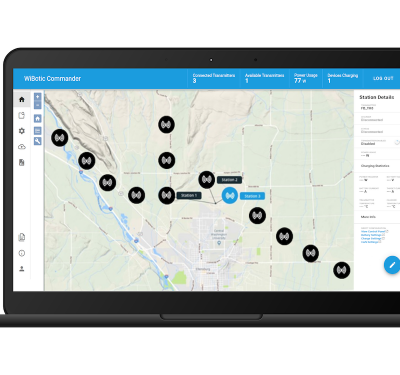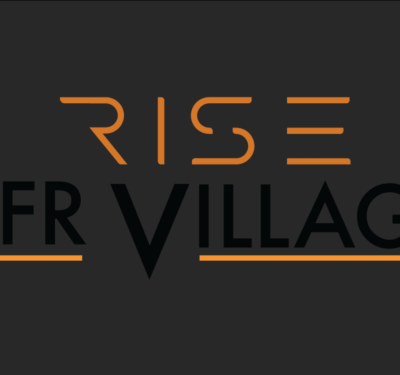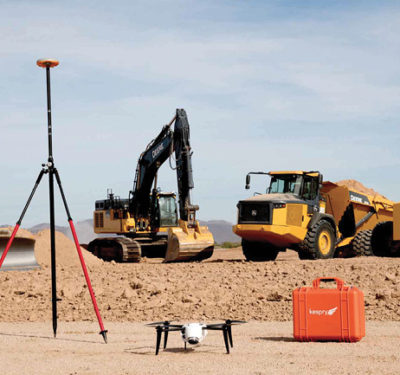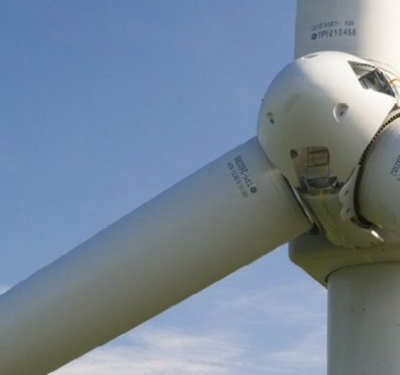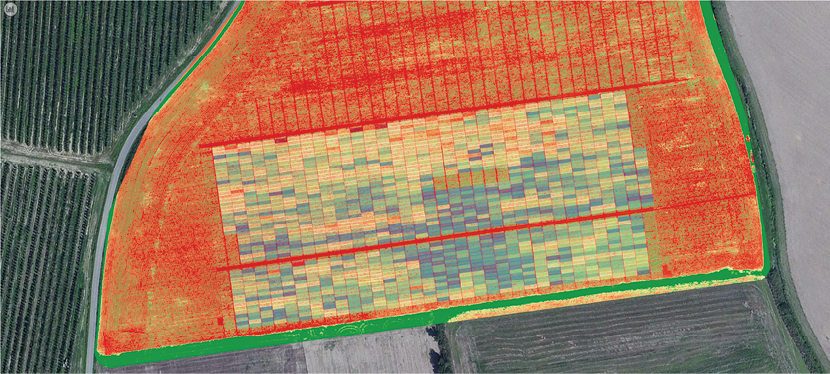
Courtesy of Maisadour Semences
Sunflowers are strange and beautiful to look at, but they are also a major cash crop supplying 25 percent of the seed market in Europe and 50 percent of its food oil market.
With so much to play for, France’s Maisadour Semences, a leading European producer of maize and oil seeds, has been eager to explore new crop management technologies to improve sunflower cultivation—including the use of drones.
“We met with Maisadour Semences through their innovation structure,” said Lenaic Grignard, Delair-Tech’s agriculture product manager, “and we decided to set up a project on precision ag valuing.”
There was an opportunity, she said, to look at two key aspects of seed breeding and production—plant counting and yield forecasting—using unmanned aircraft system (UAS).
Delair-Tech and Maisadour worked together to fly a number of sunflower plant counting missions over experimentation fields in 2015 and 2016 in the south of France.
“These fields are split into micro-plots, with 4,000 micro-plots in a field with an area of around 10 hectares (about 25 acres)” Delair-Tech Software Engineer Matthias Meulien explained. “We performed a first flight and then built an orthorectified raster image from the individual images and computed maps of vegetation indices.” Finally, he said, using those maps, the Delair-Tech algorithm was able to identify, for each micro-plot, rows, plants and gaps.
“All the data were merged and statistics computed so that our customer could easily identify micro-plots with unexpected numbers of plants or gaps,” Meulien said.
For Maisadour, sunflower cultivation begins with a high-precision seeder, so it starts with reliable information on the maximum possible number of plants per micro-plot and of the expected distance between two plants in a row. Thus, counting the number of real plants in a field means in effect counting the ones that are missing, counting the too-wide gaps between plants.
Immediate Connection
“Our relationship with Delair-Tech really started by chance in 2015,” said Boris Calvet, Maisadour Semences’ agriculture assistant for Spain and Southern France. “A meeting had been planned in Riscle, not far from Maisadour’s headquarters in southwestern France, where Delair-Tech was expected to deliver a presentation to seed producers about identifying potential agricultural applications for their drones.”
Calvet said one of his superiors heard about the meeting and he and some of his colleagues decided to attend “just in case.” As it happened, the event was a success. The Delair-Tech pitch was convincing and a relationship was born.
“The Delair-Tech presentation made us think about a possible application for plant counting,” Calvet said. “We didn’t even contact any other companies. We really saw it as an opportunity and moved quickly.”
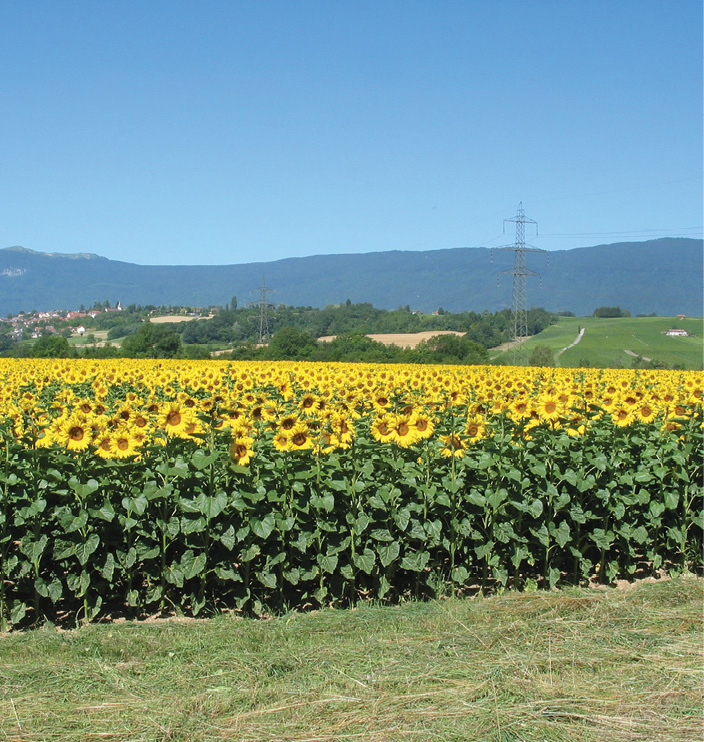
Courtesy Bjorn B. & Delair-Tech
Once the outlines for the project were set, the technical wizards went to work.
“On the Delair-Tech side, Yann Ameho wrote the first version of the plant-counting algorithm and then I extended it for row and gap identification,” Meulien explained. “Both Yann and I have a deep background in mathematics and computer sciences and we also bring an understanding of image processing techniques.”
“Most important,” Meulien said, “is the fact that all of the development was done by people from our Delair-Analytics team: We know the algorithm forwards and backwards and we can easily tweak it to adapt to different customer needs, whether you’re talking about trial fields with micro-plots or not, convex fields or not, exotic output format, etc.”
Long Range Thinking
For the air-based platform, the team chose Delair-Tech’s DT18, a long range drone with a multi-spectral sensor array called ‘DT5-Bands’—a package designed especially for precision agriculture applications.
“When you have a big area to map, the DT18 will cover the full area in one flight,” Grignard said. “This is important for the homogeneity of lighting conditions during the shots and mandatory if you want to get good quality images. On top of this, the drone is incredibly stable and the quality of the camera is very high.”
Grignard described Delair-Tech as a world leader in the development of long-range drones, and that’s hardly an exaggeration. The DT18 was in fact the first civilian UAS in the world to be approved for beyond-visual-line-of-sight (BVLOS) operations by an official rule-making body. The French Civil Aviation Authority (Direction Générale de l‘Aviation Civile—DGAC) approved the DT18 in 2012.
“What’s more,” she said, “we have experienced photogrammetrists and agronomist on our team together with high-level engineers for drone design and data scientists. It makes for a very good and complementary mixture of skills to accompany the customer and deliver results.”
And the proof is, after all, in those results. “The new method is much less time-consuming and more reliable than conventional sunflower plant counting,” Meulien said. “Usually our customer hires seasonal workers to estimate gap lengths for each micro-plot. These people have to walk through the fields and estimate gap lengths from close up. Different people count in different ways and even the same person will change his or her way of counting over a period of time,” Meulien said. “And in the end there is still no way to check the quality of the results.”
Contrast that with drone-based counting, Meulien said, “In a single drone flight, less than two hours in duration, we can map an area that takes days to cover on foot.
“Note also that the starting point of our algorithm is an orthorectified raster image that can be viewed as a snapshot of the crop and is available for later use. So the customer can check the quality of the results from that image, because they can view simultaneously the identified plants and the raster image.”
Meaningful Results
“The sunflower is very important to Maisadour Semences,” Calvet said. “It’s the species we sell the most.” And, he said, while the company hopes to continue working with Delair-Tech, that effort isn’t about replacing the current workforce with machines: “For the moment, our teams are designed to do the work manually and our goal is not to replace them anytime soon, but this application could save us money should we decide to expand and create new teams.”
On the question of possible new applications, Delair-Tech’s Grignard said, “Our algorithm is well adapted to estimating corn plant count. (That is) still in trial fields, but this method can also be valuable in other applications.” Those other new applications could include identifying where trees are missing in large orchards and helping farmers make the decision to replant early in the season, after plant emergence. “All these could be crucial for farmers,” Grignard said, “to have a global and accurate view of their fields, making it easier to manage key decisions.”
“The drone-based counting technology offers new possibilities,” agreed Calvet, “like being able to have an image of the field that we can go back to anytime we need to during the season. The whole concept of geolocalized parcels and micro-plots is also quite new and interesting. It’s a new way of approaching our work and could end up being a new source of applications.”
Calvet said Maisadour Semences is looking into potential new applications in very specialized areas such as normalized difference vegetation index (NDVI). NDVI, a ratio of several wavelength bands typically re-emitted by plants, was originally used by satellites to create maps with a vegetation index, he explained. But when using the same technique on a smaller scale (with a drone flying 70m above the ground), that ratio is said to be correlated with several plant characteristics including biomass, leaf area index and chlorophyll concentration.
“Though the (NDVI) ratio is unlikely to be correlated with all these variables at once,” Calvet said, “getting one (element) of this information for all our hybrids with a single drone flight could be interesting; that’s why further investigation could be carried out.”
In the meantime, however, simply counting the gaps in the rows may prove to be particularly useful.
As applications go, for now, Calvet said, “I think plant counting is still by far the most promising one.”


